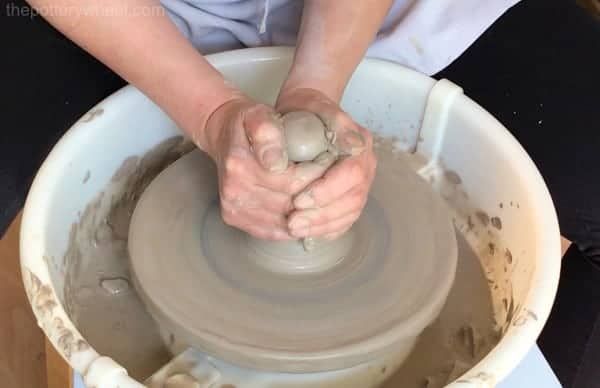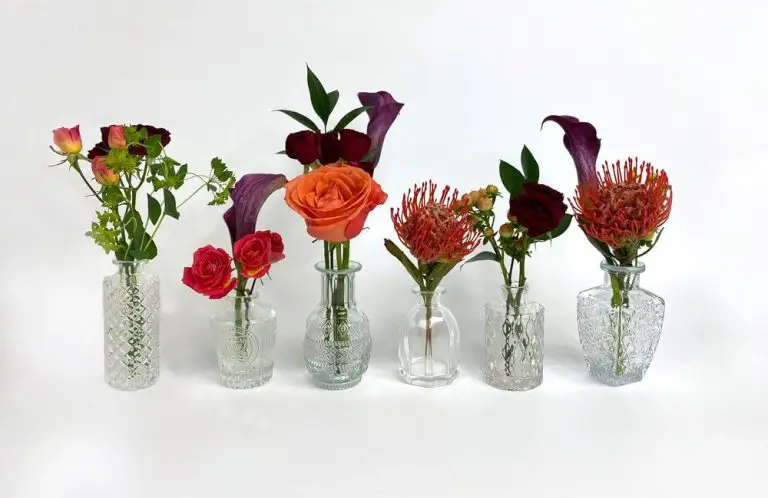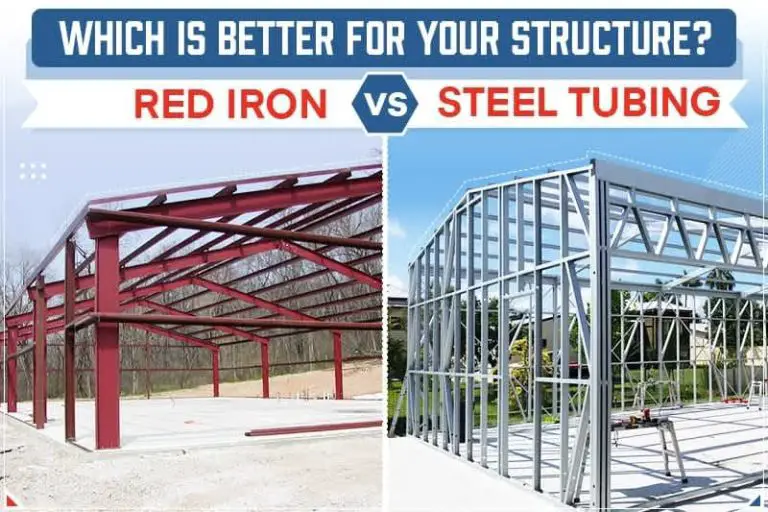Why Do Pottery Wheels Cost So Much?
Pottery wheels are essential tools for potters and ceramic artists to throw, shape, and form clay vessels and objects. But depending on the features and brand, pottery wheels can range widely in price – anywhere from a couple hundred dollars to a few thousand dollars. So why do quality pottery wheels come with such a hefty price tag? In this article, we’ll explore the main factors that influence the cost of pottery wheels.
Materials
High-end pottery wheels are constructed from premium materials like steel and aluminum to ensure durability and precision (Source). Steel frames provide rigid support while aluminum wheel heads are lightweight yet stable. These metals are far superior to cheaper alternatives like plastic which can warp and flex over time. Premium wheels also incorporate top-grade components like ball bearings and high torque motors. Ball bearings enable the wheel head to spin smoothly and maintain momentum. Powerful motors provide consistent torque for centering clay without slowing or stalling.
In contrast, low-cost hobbyist wheels may rely on plastic parts and lower quality motors. While these options are suitable for beginners, the materials used limit their longevity and performance. Serious potters require the durability and reliability offered by metal components and superior internals. This level of quality comes at a higher price but allows expert ceramic artists to throw precisely and work efficiently.
Craftsmanship
The craftsmanship of a pottery wheel is extremely important in determining its quality and cost. Top brands like Shimpo, Brent, and Soldner use expert engineering and precision construction to create their wheels (Source). Many high-end wheels continue to be handmade by master craftsmen, using generations of expertise to handcraft each component.
This artisanal approach to crafting each wheel results in unparalleled quality control and attention to detail. Master potters carefully shape the wheel head, lathe, and table to exacting specifications. The electronics and motor are also engineered for optimal torque, smoothness, and control. Premium hardware, bearings, and components ensure a finely tuned product built to last through years of intensive use.
This meticulous hand-crafting and fine tuning is a labor-intensive process, but it allows top pottery wheel brands to achieve flawless performance and reliability. The precision and quality of these expertly engineered and hand-made wheels justify the higher costs compared to mass-produced budget options.
Versatility
Pottery wheels need to be versatile to suit the needs of different potters and projects. Advanced potters require wheels that offer adjustable speed settings, reversible direction, and heavy-duty construction. According to The Best Pottery Wheels: A Buyer’s Guide (https://www.soulceramics.com/pages/best-pottery-wheels), adjustable speed settings allow potters to find the perfect pace for throwing and shaping based on the clay type and desired technique. Wheels with variable speed ranges, such as 100-250 RPM, provide greater control over the throwing process.
Many high-end wheels also offer the ability to reverse direction. As explained on Soul Ceramics, reversing can help center clay and achieve decorative effects. Sturdy steel and cast iron components allow advanced potters to throw large, heavy pieces without taxing the wheel. In summary, adjustable speed, reversible direction, and heavy-duty construction enable versatility across different potters, projects, and techniques – key factors that justify the higher cost of professional-grade wheels.
Power Requirements and Motor Strength
Pottery wheels require strong electric motors to generate enough power for centering and shaping clay. The motor must be powerful enough to spin the heavy clay at a consistent speed as the potter applies pressure while throwing on the wheel (cite – https://www.reddit.com/r/Pottery/comments/ehpe6v/do_pottery_wheels_need_special_electrical_wiring/). Most quality wheels have motors in the 100-300 watt range, allowing them to center up to 25 lbs of clay without slowing down. Weaker motors around 50-100 watts may struggle with heavier pieces or thicker clay bodies (cite – https://skutt.com/skutt-resources/resources-just-for-you/architectural-specifications/electrical-specifications/). High-end wheels boast 1 hp+ motors that provide exceptional power for large-scale work.

In addition to raw power, the motor controls on quality wheels allow precise speed adjustments, usually ranging from 0 rpm up to over 250 rpm. Variable speed settings give potters flexibility for centering, throwing, and trimming at different stages. Quality wheels also offer reverse rotation to aid in centering difficult clays. Motors and components must be durable enough to handle long hours of continual spinning day after day.
Balance
A quality pottery wheel must have precise balance and weight distribution to spin smoothly and vibration-free. This requires high-grade ball bearings and a wheel head that is perfectly calibrated and weighted (Harman). The wheel head itself should feel sturdy yet move fluidly when spun by hand. High-end wheels have heavy weighted flywheels, often made of cast iron, which use inertia to keep the rotation smooth and steady. The large mass of the flywheel stabilizes the spinning and prevents wobbling from an uneven load while throwing. Quality bearings also minimize vibration and off-center wobbling during use. Precision bearings allow the flywheel to spin freely with little effort from the potter. The combination of a weighted flywheel and high-quality bearings creates a pottery wheel that has flawless, vibration-free rotation for many years of use (Mackenzie). This degree of craftsmanship and fine calibration is why professional-grade wheels cost more than models aimed at beginners or hobbyists.
Durability
Pottery wheels are designed to last for many years if properly maintained and cared for. Quality wheels from reputable brands like Brent, Shimpo, and Skutt often come with 5-10 year warranties, indicating their longevity.
Some key factors that contribute to a wheel’s durability include:
- Sturdy construction from metal and high-grade plastic components
- Sealed ball bearings and motors
- Rust-resistant surfaces
- Balanced spinning action to reduce wear and tear
With regular maintenance like lubricating bearings and tightening nuts and bolts, a high-end electric wheel can easily last 10+ years. Even simple kick wheels, if cared for, can last indefinitely. According to one artisan, “A wheel that has been stored and not used for 5 or more years could have some issues” (source).
So with proper, regular use and maintenance, most quality pottery wheels should keep spinning smoothly for decades.
Specialty Features
Many high-end pottery wheels contain ergonomic features to improve the comfort and ease of throwing clay. This includes angled splash pans to reduce back strain, as well as tilted wheels and adjustable stool heights that bring the clay closer to the user’s body (https://www.sheffield-pottery.com/Pottery-Wheel-Buying-Guide-s/1262.htm).
Digital variable speed controls allow potters to precisely dial in the perfect RPM for different stages of throwing. This type of speed control provides more consistency and control than mechanical systems. Some high-end wheels also have acceleration and deceleration settings for smooth speed changes (https://www.soulceramics.com/pages/what-to-look-for-when-buying-a-pottery-wheel).
Many professional-grade wheels come with tilting bases or removable tables to adjust the wheel angle from 0 to 45 degrees. This allows potters to work comfortably at a slight tilt, easing the strain on their wrists and posture. Specialty throwing tables and splash pans customized for the wheel are also common upgrades.
Brand Reputation
A significant portion of the cost of a high-end pottery wheel comes from the brand reputation and recognition. Well-known brands like Brent (Most reputable pottery wheel brands in usa), Shimpo (Pottery Wheel Buying Guide), and Skutt (The 6 Best Pottery Wheels in 2023 (October)) have built trust and familiarity among professional potters over decades. Their wheels consistently rate highly for power, durability, balance, and specialty features tailored for serious ceramic artists. While cheaper or lesser-known brands may have similar technical specifications, the top brands inspire confidence in performance and longevity.
Professional potters often recommend investing in a respected brand name for your first major wheel purchase, knowing the higher costs will pay off in the long run (9 of the best pottery wheels to buy in 2024). For beginners or hobbyists, lower-priced wheels can still offer good value for learning. But as skills progress, upgrading to the exceptional quality of brands recognized by experts merits the premium pricing.
Conclusion
To recap, there are numerous costs involved in the manufacturing of high-quality pottery wheels that justify their typically high prices. Quality materials like strong metals, composites, and stone are expensive but ensure durability and stability during throwing. Expert craftsmanship takes time and skilled labor, increasing costs but resulting in smooth, precise, trouble-free operation. Advanced features like variable speed controls, ergonomic designs, and integrated splash pans allow for greater versatility and functionality. Brand name recognition also factors into pricing, as respected brands charge a premium for their reputation of reliability. For passionate potters, these wheels are a lifetime investment that enable their creativity and artistry. The high performance and longevity offset the initial cost over years of satisfying use. While budget options exist, serious potters will find exceptional value in the thoughtful engineering, sturdy construction, and flawless performance of a professional-grade wheel.





